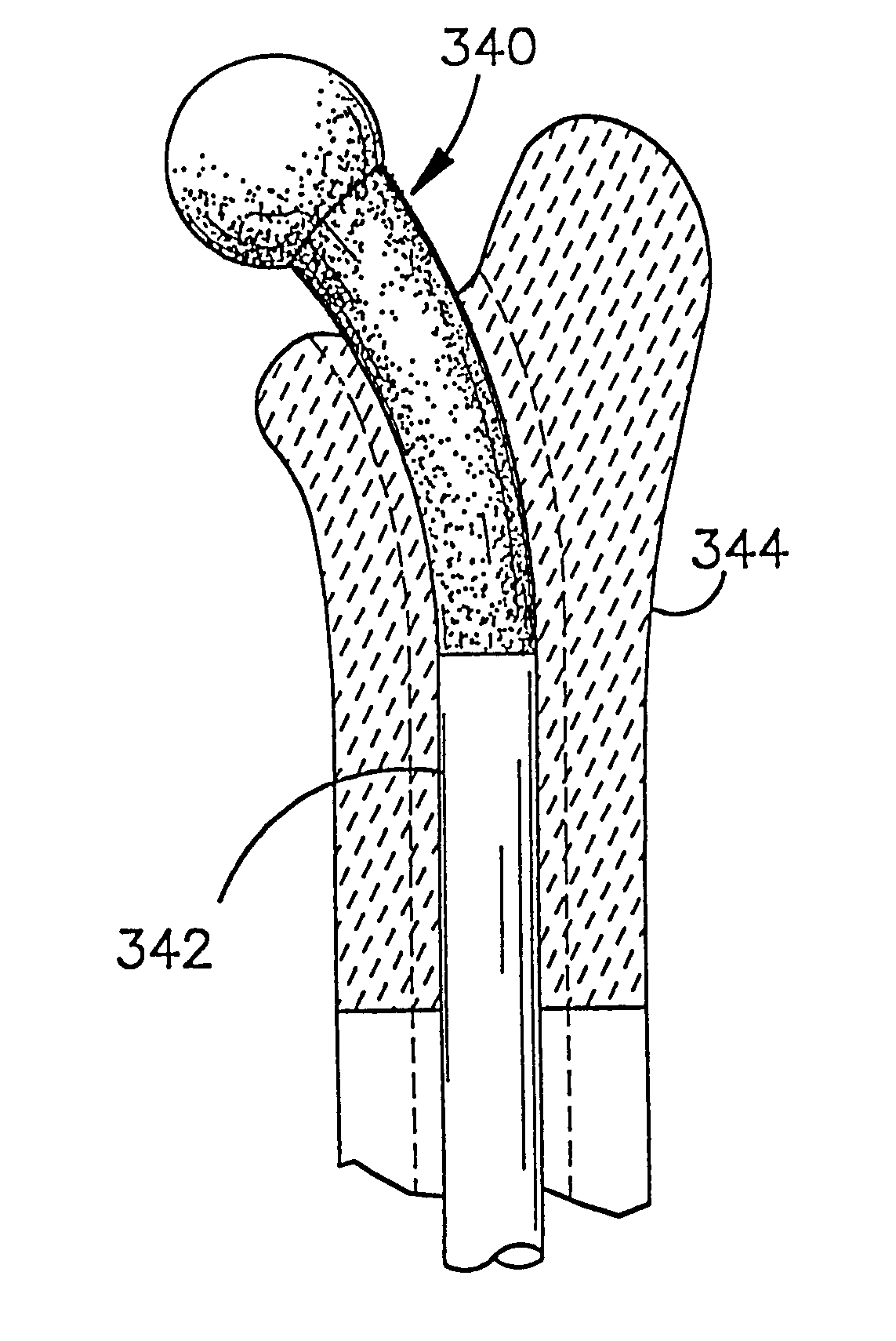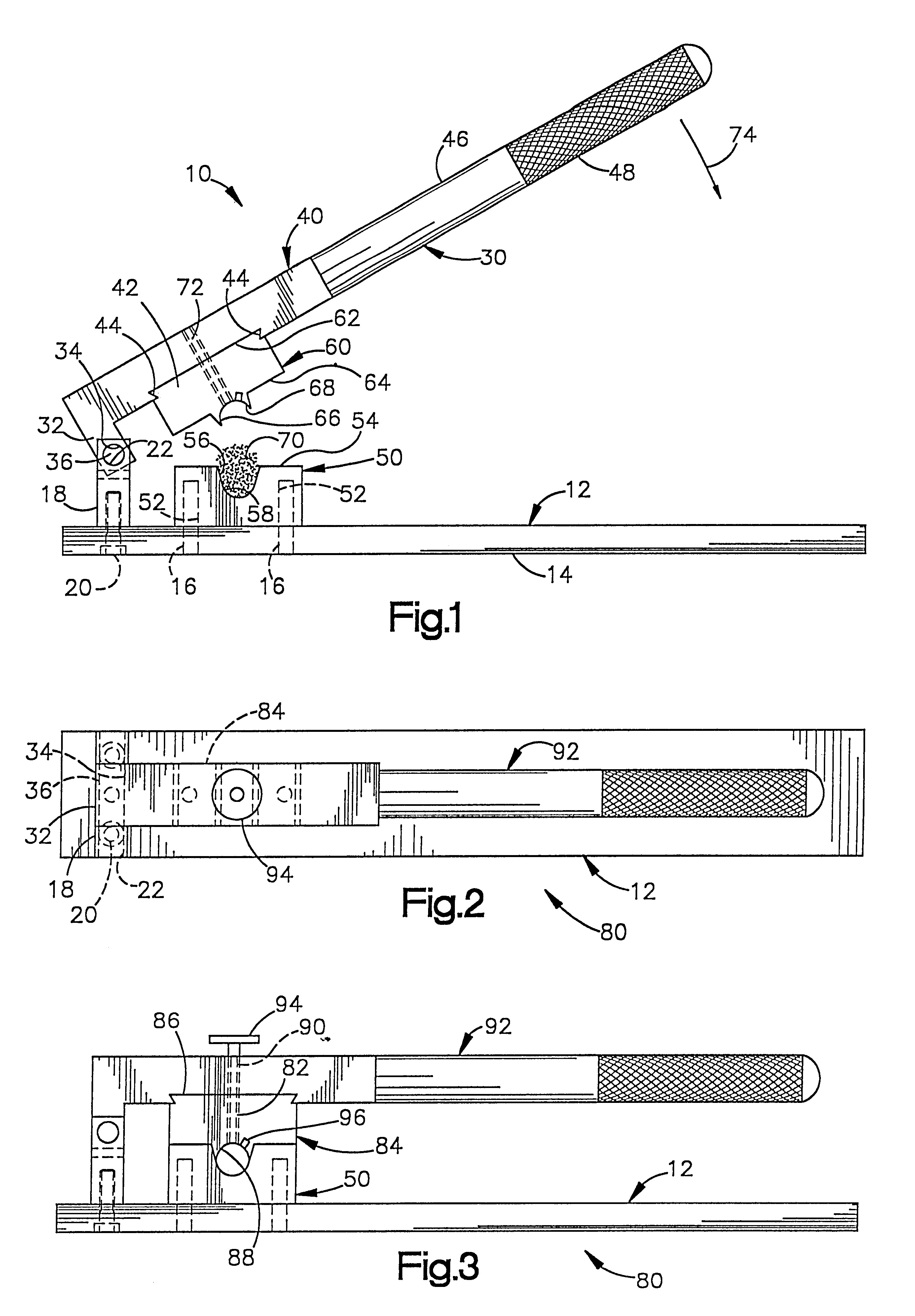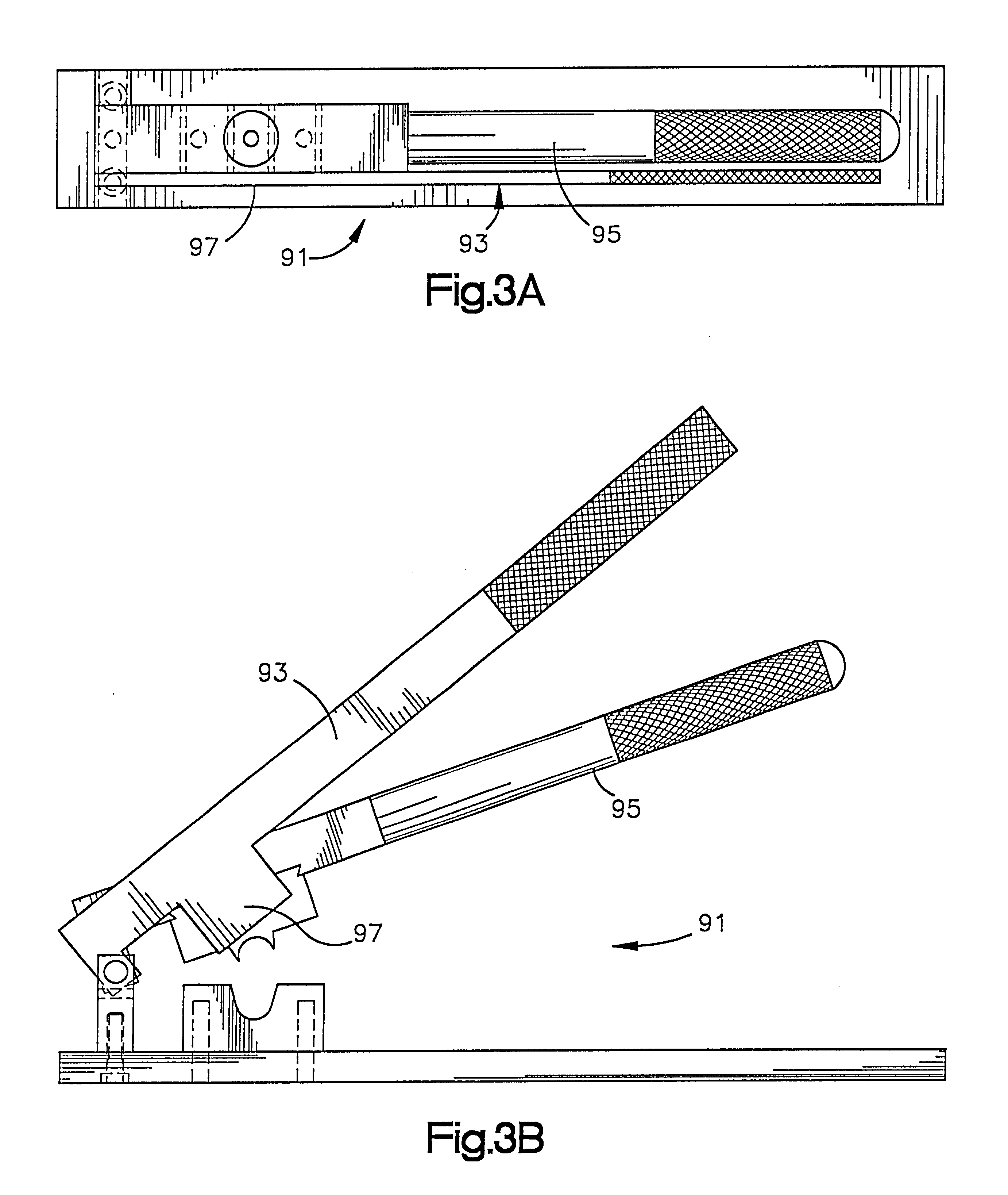Expandable hip implant
a hip implant and expansion technology, applied in the field of expansion hip implants, can solve the problems of reducing the holding power of the graft and reducing the ingrowth ability of the gra
- Summary
- Abstract
- Description
- Claims
- Application Information
AI Technical Summary
Benefits of technology
Problems solved by technology
Method used
Image
Examples
second embodiment
In the invention, illustrated in FIG. 5, a tissue press 150 is fluid operated (pneumatic or hydraulic) rather than manually operated. The press 150 includes a base 152 having a support surface 154 for supporting the base 152 and thus the press 150 on a table or other support (not shown). A first forming element 156 is attached to the base 152. The first forming element 156 may be slidably or otherwise attached to the base 152 in any suitable manner which blocks movement of the forming element 156 relative to the base 152 during operation of the press 150 and which allows for easy interchange of forming elements 156. The first forming element 156 has an upwardly facing forming surface 158. A fluid drain opening 160 is in fluid communication with the forming surface 158 of the first forming element 156.
An air or hydraulic cylinder 170 is fixed to the base 152 above the first forming element 156. The cylinder 170 has a port 172 for the introduction of air or other fluid under pressure ...
third embodiment
In the invention, illustrated in FIG. 6, a tissue press 200 includes a base 202 having a support surface 204 for supporting the base 202 and thus the press 200 on a table or other support (not shown). A first forming element 206 is attached to the base 202. The first forming element 206 may be slidably or otherwise attached to the base 202 in any suitable manner. The first forming element 206 includes a plurality of first fingers 208 which together have a forming surface 210 to progressively compress bone or other tissue into a predetermined shape.
An upper arm 220 is pivotally mounted to the base 202 by a pivot pin 222. A second forming element 224 is connected to the upper arm 220 in a suitable manner. The second forming element 224 includes a plurality of second fingers 226 which together have a forming surface 228 facing the forming surface 210 on the first forming element 206. The second fingers 226 are interdigitable with the first fingers 208.
In operation of the press 200, a p...
fourth embodiment
In the invention, illustrated in FIG. 8, a tissue press 250 is operated to extrude rather than press material. The press 250 includes a base 252 having a support surface 254 for supporting the base 252 and thus the press 250 on a table or other support (not shown). A die 256 is attached to the base 252. The die 256 may be slidably or otherwise attached to the base 252 in any suitable manner which blocks movement of the die 256 relative to the base 252 during operation of the press 250 and which allows for easy interchange of forming elements 256. The die 256 has an upwardly facing opening 258. An extrusion opening 260 is in fluid communication with the opening 258 of the die 256.
An air or hydraulic cylinder 270 is fixed to the base 252 above the die 156. The cylinder 270 has a port 272 for the introduction of air or other fluid under pressure to operate a piston 274 in a known manner. A ram 280 is connected to the piston 274. The ram 280 has a surface 282 facing the opening 258 on t...
PUM
| Property | Measurement | Unit |
|---|---|---|
| size | aaaaa | aaaaa |
| shape | aaaaa | aaaaa |
| structure | aaaaa | aaaaa |
Abstract
Description
Claims
Application Information
 Login to View More
Login to View More - R&D
- Intellectual Property
- Life Sciences
- Materials
- Tech Scout
- Unparalleled Data Quality
- Higher Quality Content
- 60% Fewer Hallucinations
Browse by: Latest US Patents, China's latest patents, Technical Efficacy Thesaurus, Application Domain, Technology Topic, Popular Technical Reports.
© 2025 PatSnap. All rights reserved.Legal|Privacy policy|Modern Slavery Act Transparency Statement|Sitemap|About US| Contact US: help@patsnap.com



